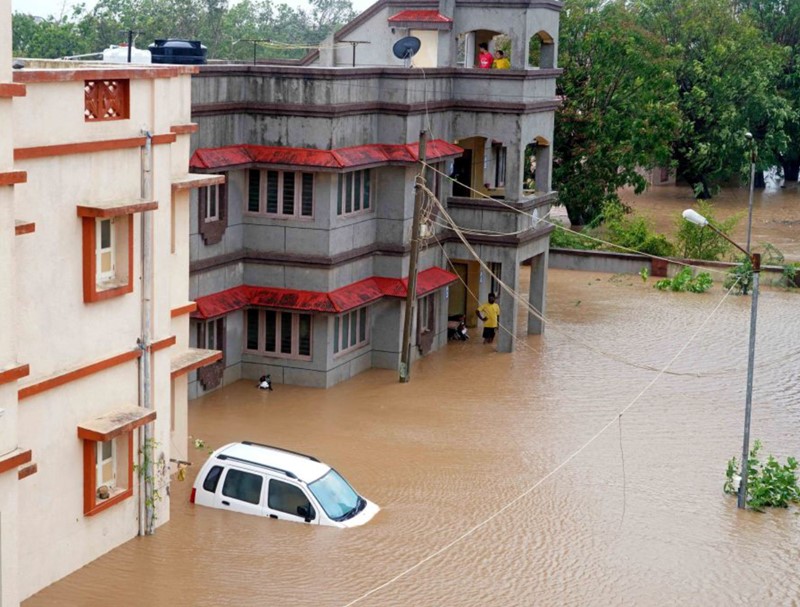Cyclone Biparjoy made devastating landfall on the Gujarat coast late last week, after the storm had been brewing in the Arabian Sea for over a week. Local people have been dealing with the after-effects.
Economic consequences of the cyclone unfurled. Strong winds and heavy rainfall shook and knocked out a small bridge near the Bhavanipar village of Bhuj. Trains and flights were cancelled. The ravaging cyclonic storm damaged 5,120 electricity poles. Electricity snapped off in 4,600 villages. Yet almost immediately, the power supply has been restored in 3,580 villages. The remaining villages are due to have their power supplies restored by 20 June.
Also interesting is that shops and business establishments in Gujarat’s Kutch district have already bounced back to near-normal service, opening their doors as the electricity was restored.
Many trees were also uprooted by the cyclone – nearly 600 of them. The resulting road blockages are now being cleared to facilitate movement. The quantum of damage is unavoidable. Still, there was preparedness for the storm.
The Dwarkadhish Temple in Devbhumi, Dwarka had closed due to the cyclone. It has since reopened and devotees headed to the temple to perform ‘Dhwaj Pooja.’ Along with devotion, the people of Kutch have shown resilience. Roofless or damaged roofs are being restored so that people can shift back to their homes from the temporary shelter care. However, many people have lost all or most of their belongings, as almost everything has been washed away with the tide. The same can be said of the boats as well. All this has made the residents of Kutch marooned, forcing them to start life afresh.

Image credit: Getty Images
Like humans, the animals in the Gir forest and Kutch district needed care. There have been over 200 teams who were ready to save the animals. Two lion cubs that had reportedly fallen into an open well were rescued.
The good news is that Cyclone Biparjoy has weakened, its status reduced from being very severe to merely severe after it made landfall in the coastal parts of Gujarat. The India Meteorological Department (IMD) conveyed to the media that the intensity of the cyclone had lowered. It was in a deep depression state and could come down to depression in the next 12 hours. The velocity of the cyclone has tapered down. Yet one can’t overlook its ripple effect. The desert state of Rajasthan, known for its undulating sand dunes and opulent palaces, is experiencing a torrential downpour, akin to a flood-like situation. Delhi, too, has had heavy showers.
Prime minister Narendra Modi spoke to Bhupendra Rajnikant Patel, the chief minister of Gujarat, about the loss caused by the cyclone. Amit Shah, the Union home minister, took an aerial tour of the affected areas. He has also visited the hospital and met those injured during the cyclone. Insurance Regulatory and Development Authority of India (IRDAI) has directed the insurers to settle claims in the states that have been impacted by the cyclone.

Image credit: Getty Images
Whenever a natural calamity strikes, it creates an upheaval experience. This cyclone was no exception. What could be noteworthy of Biparjoy is that the damage caused is being addressed quickly. This has been possible because of the team work performed by the central-state governments, the national disaster response force and the armed forces. Their round-the-clock rescue-relief operations were in full swing. With this, comes aid in the form of technology. Multiple satellites and observation stations gave the necessary signals for accurate forecasts. This paved the way for timely evacuation.
Biparjoy (pronounced ‘Biporjoy’) stands for disaster in Bengali language. The cyclone was devastating, undoubtedly. It is believed that all is calm before and after the storm. Well, it’s hoped that the raging tidal waves give way to the gentle ebb and flow of calmer waters. It’s a soothing thought.
Sign up to the E&T News e-mail to get great stories like this delivered to your inbox every day.


